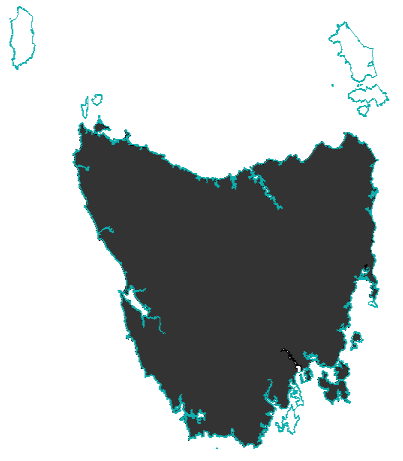TASMANIAN DEVIL
Unveil the mysteries of the fascinating monotreme found only in Australia.
Tasmanian Devil (Sarcophilus harrisii): is a carnivorous marsupial of the family Dasyuridae.
Kingdom: Animalia
Phylum: Chordata
Class: Mammalia
Order: Dasyuromorphia
Family: Dasyuridae
Genus: Sarcophilus
Size and Weight:
Tasmanian devils are about the size of a small dog. They can grow up to 65 cm long, not counting their tail, which can add another 25 cm. Males are usually bigger than females and can weigh up to 12 kg, while females usually weigh around 8 kg.
Appearance:
Tasmanian devils have a stocky and muscular build, with black fur and sometimes white patches on their chest or rump. They have large heads, sharp teeth, and strong jaws that help them bite through almost anything. Their ears turn red when they get excited.

Diet:
Tasmanian devils are carnivores, which means they eat meat. They are scavengers, so they mainly eat dead animals, including wallabies, possums, and even roadkill. Their powerful jaws and teeth can crush bones, and they eat almost every part of the animal, including the fur and bones.
Geography:
Tasmanian devils are only found on the island of Tasmania, which is part of Australia. They used to live on the mainland of Australia, but they went extinct there thousands of years ago.
Habitat:
Tasmanian devils live in various habitats across Tasmania, including forests, coastal areas, and farmland. They make their dens in caves, hollow logs, or burrows.
Social Structure:
Tasmanian devils are mostly solitary animals, which means they like to be alone. They come together when there is food to eat, and that’s when they can get pretty noisy and aggressive with each other. They have loud screams, growls, and snorts, which is how they got their name—they sounded like “devils” to early European settlers.

Breeding:
Tasmanian devils breed once a year, usually in March. A female devil can give birth to up to 30 tiny babies, called “pups,” but she only has four teats, so only the strongest four survive. The pups stay in their mother’s pouch for about four months, then they move to a den for a few more months before becoming independent.
Threats:
One of the biggest threats to Tasmanian devils is a disease called Devil Facial Tumour Disease (DFTD). This disease causes large, cancerous tumors to form on their faces and mouths, making it hard for them to eat. Sadly, many devils die from this disease. Other threats include being hit by cars and losing their habitat due to human activities.
Conservation Status:
Tasmanian devils are listed as endangered, which means they are at risk of becoming extinct. The population has decreased a lot due to DFTD and other threats.
Conservation Efforts:
To help save Tasmanian devils, scientists are working on breeding programs and researching ways to stop the spread of DFTD. There are also protected areas where devils can live safely away from human threats. People are also working to raise awareness about the importance of protecting these unique animals.